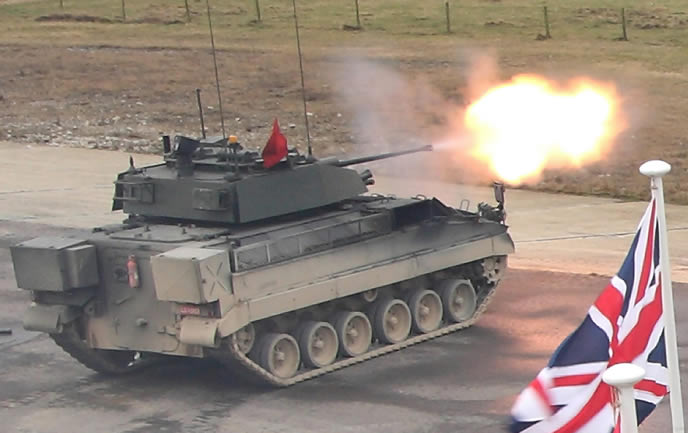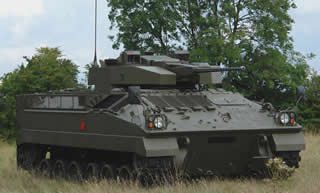Two major armored vehicle acquisition programs running in parallel in the UK are nearing critical milestones in the upcoming months. With the Scout Vehicle (SV) become the top priority FRES vehicle, and the imminent selection of prime contractor for the Warrior Upgrade program, it is likely that both programs will select one winner, offering the Army with training and logistical advantages.
The British Army Warrior infantry fighting vehicles is being upgraded under the Warrior Capability Sustainment Program (WCSP) worth £1bn. Its goal is to extend the Warrior lifespan at least until 2038. A decision is expected in the first quarter of 2010 with initial deliveries by 2013. MOD expects to upgrade 449 Warrior with the full kit, with additional 200 vehicles to receive partial upgrades. BAE Systems and Lockheed Martin UK – INSYS have submitted two competing proposals.

WCSP features a new turret and weapon system, increasing the vehicle’s firepower and installation of a digital computing and networking system. Warrior Enhanced Electronic Architecture (WEEA) will also be introduced, improving situational awareness and integrating the vehicle into a ‘networked’ battle scene. Another aspect of the upgrade will be the introduction of a modular armor system, enabling more flexible adaptation of the vehicle’s protection against evolving threats, the Warrior Modular Protection System (WMPS). Both proposals are based on the two turrets being offered for the FRES-SV program, and MOD decisions in the two programs are likely to influence each other, at least to maintain logistical commonality.
BAE Systems has released some information about its proposed design. According to BAE Systems, the FRES and Warrior turrets proposed by the company are very similar – the gunner crew-station is identical – and features optimized crew stations and large hatches, designed to accommodate today’s and tomorrow’s soldier, wearing full Osprey body armor. According to BAE designers, soldiers are getting bigger and crew positions in many existing vehicles are becoming too cramped to accommodate them, or allow easy exit from the vehicle in an emergency. This turret is based on the MTIP2 program which saw the BAE Systems CT40 turret, mounted on Warrior, fire-on-the-move test over a period of four months during 2008. The turret is optimized for the CT40 weapon system, mandated by the UK MoD for Warrior and FRES SV. The ammunition is carried low, maximizing crew safety, while best positioned to feed into the system, offering rapid and easy access to the ammunition store, under armor.

This weapon enables effective fire on the move, as well as projectiles with time-set fuses, capable of engaging targets behind cover or in defilade. The case-telescopic ammunition is employing projectiles three times more effective than the current Rarden 30 ordnance. The new armor kit is introducing a modular mounting system, fitting into future modular armor elements. This will be produced similar to those developed under the recent Urgent Operational Requirements (UOR), allowing rapid implementation and quick changes to meet new threats. BAE Systems has also developed a new blast-attenuating driver’s seat further improving earlier UOR mine protection measures, such as a new belly plate and stiffer suspension, restoring the vehicle’s riding height.
To further strengthening its local positioning in the UK, Lockheed Martin UK has established a strategic partnering agreement with the British Defence Support Group (DSG). The group has brought together the ABRO and DARA businesses to specialize in maintenance, repair, overhaul and upgrade services for the through-life support of military equipment in service with the UK Armed Forces. The association with DSG has been at the heart of Lockheed Martin’s WCSP solution and, according to Stephen Ball, Chief Executive of Lockheed Martin UK, if the company wins the WCSP and FRES programs, much of the associated activities will be co-located with DSG at their Donnington facility.



















